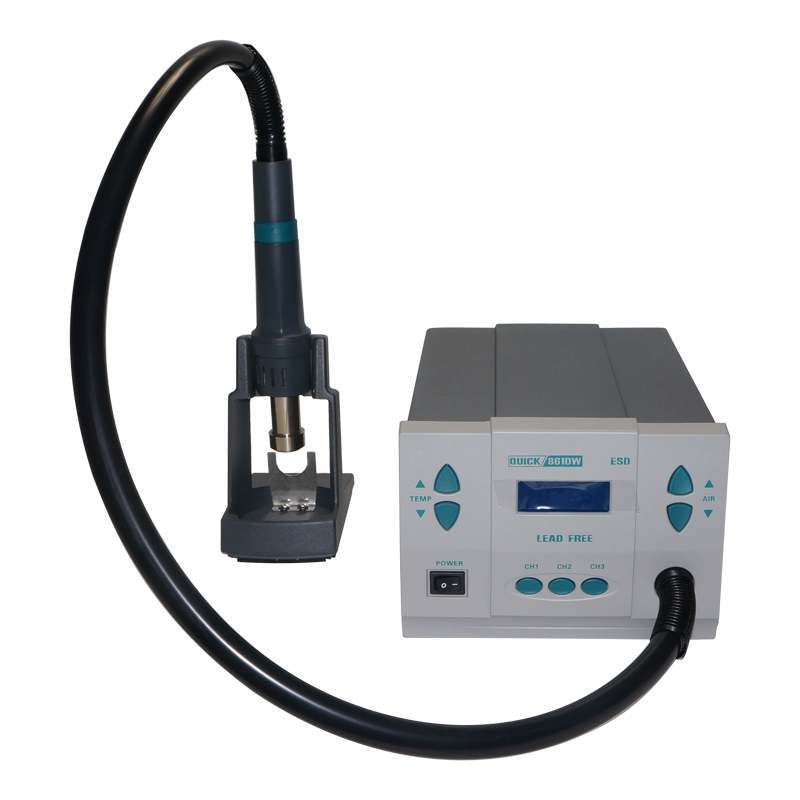
Above: AD----110V-1000W Hot-Air BGA Rework Soldering Station Motherboard-Repair-Station (click image for more details)
.
1. LIVE MUSICAL PERFORMANCES
The science of room acoustics developed in large performance spaces: concert halls. The sound sources, voices and musical instruments, were considered as a group to be approximately omnidirectional. Sounds from these sources radiate in all directions, being reflected by a few carefully positioned early reflecting surfaces, and then later by many somewhat randomly positioned reflecting, diffracting and scattering surfaces and objects, to create a uniformly mixed reflected sound field that makes its way to all parts of the audience.
All acoustical measurements done in these spaces begin with a sound source-a starter's pistol, explosive device, or a special loudspeaker-all of which are intended to radiate sound equally in all directions. So the sound source is a "neutral" factor, and this allows for some generalization in interpreting the meaning of whatever acoustical measurements are made. It’s an examination of the room itself and how it modifies and manipulates the sound of a standard source and, by inference, a collection of musicians. Casual thought reveals that this is a great simplification because different musical instruments have significantly different directivities. The violin ensemble probably has, as a group, quite wide dispersion, with much of the high-frequency energy going upward. The brasses have a strong forward bias and are strongly directional at high frequencies, whereas the French horns have a backward directional bias responsible for their peculiarly spacious sound (Meyer, 1978, 1993).
In live performances:
• The sound sources are multidirectional, radiating sound in all directions, most of it away from individual listeners in the audience.
• Perceptions of timbre, space, and envelopment created by reflections within the room are essential parts of the performance.
• Musical performances are routinely adjusted-size, physical arrangement, and composition of the orchestra-to cater to the characteristics of individual halls.
• Classical composers sometimes wrote different versions of the same work for performance in specific halls, changing pace and instrumentation to compensate for the size and acoustical properties of the halls.
• Individual halls are more flattering to certain kinds of music than to others. A truly general-purpose hall is improbable without electronically-assisted reflections and reverberation.
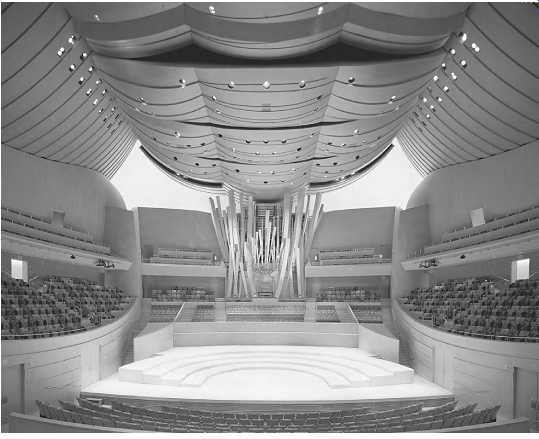
FIG. 1 Walt Disney Concert Hall Auditorium, Music Center of Los Angeles
County.
In sound reproduction:
• Most loudspeakers have significant directivity and are aimed at listeners.
• Ideally, perceptions of timbre, direction, distance, space, and envelopment should be conveyed by multichannel audio systems delivering specific kinds of sounds to loudspeakers in specific locations.
• Ideally, what listeners hear should be independent of the room around them. In practice it’s the required degree of independence that is under investigation.
• Conceivably with the right kind of recording and multichannel reproduction it would be possible to recreate the illusion of hearing musical performances or film sound tracks within any real or imagined acoustical spaces.
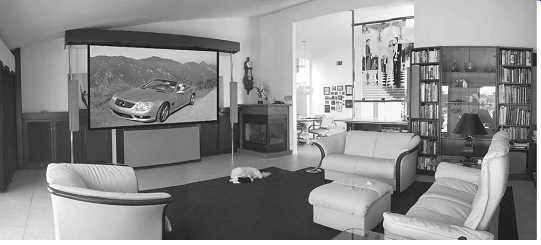
FIG. 2 The author's entertainment/family room ca. 2003. Note Pinot,
the acoustically absorbent bichon frise, cleverly arranged with a large
toy to help absorb the floor reflection during critical listening. His
willingness to "stay" was found to be dependent on program
selection.
So the basic assumptions underlying measurements in concert halls are a simplification of reality, meaning that they don’t always convey a complete or correct meaning. In addition, low bass is as important to satisfying classical performances as it’s to rock and roll, and none of that is revealed in the standard measurements. Perceptive concertgoers may notice that the number of bass viol players varies with musical performance and with the hall in which it’s performed. Positioning of the players relative to adjacent boundaries is also a factor, although large auditoriums, because of their size, are missing the bass "boom" and seat-to-seat variation problems that plague us in small rooms.
Driven by habit and tradition, many of the same measurements have been carried over into small rooms used for recreational listening to music and movies. But, as we will see, acoustical events in a listening room are very different from those in a concert hall. The sound sources, the loudspeakers, usually have significant directivity, meaning they don’t excite the room in a "neutral" manner. The rooms also have significant absorption, much of it concentrated in areas of carpet, drapes, and furniture.
Measurements made with such loudspeakers are measurements of the loud speaker and room in combination, which is a different thing. And it’s the sounds radiated by the multichannel sound system (two, five, or more directional loudspeakers all aimed at the listeners but from different directions) that deliver the impressions of direction and space, not the listening room itself, which is yet another different thing. Obviously the listening room modifies what is heard through the audio system, so the challenge is to be certain that it does not intrude excessively into the listening experience, or if it does, in a benevolent manner.
In contrast, a concert hall is designed to be a substantial positive contributor to a live performance. It’s part of the performance to such an extent that classical composers often wrote in styles appropriate for specific types of halls, and a few had different versions of the same piece of music for performance in different halls. In an interesting parallel to the "circle of confusion" discussion in the previous SECTION, it’s fascinating to learn that some composers failed to adequately consider the effects of the performance environment when creating their works. As they toiled in their small studios, they did not make adequate allowances for what would happen when the music was performed by real orchestras in real halls. As a result, tempo markings were sometimes impossibly fast paced.
Conductors must try to take all of this into account as they prepare for performances in a specific hall, adjusting the orchestral technique to compensate for too much or too little reverberation, and so on. They change the number and physical arrangement of musicians and alter the playing style, tempo, and instrumentation to accommodate rooms of different size and acoustical character. Forsyth (1985), Beranek (2004), and Long (2006) discuss numerous interesting examples of the interplay between music and architecture over the centuries.
Some of the comments are especially interesting in this age of sound reproduction, in which audiophiles seem to strive for increasing levels of detail and clarity. For an important period in the history of classical music, the opposite was the objective. Beranek explained this as follows:
From Haydn onward, each generation of composers increased the size and tone color of the orchestra and experimented with the expressive possibilities of controlled definition.
The music no longer required the listeners to separate out each sound they heard to the same extent as did Baroque and Classical music: In some compositions a single melody might be supported by complex orchestral harmonies; sometimes a number of melodies are interwoven, their details only partly discernable in the general impression of the sound, perhaps rhythmic or dramatic, often expressive or emotional.
Large halls are a challenge to much of the older musical repertoire. Forsyth (1985) explained it this way:
Consider, say, the mismatch of a 21-piece orchestra playing Haydn symphonies on baroque instruments in a concert hall holding 3000 listeners. The visual sense of involvement with the music is reduced, together with the emotional impact: the orchestra sounds "quieter" than in the small concert halls for which Haydn wrote his music. And not only is the lower sound level significant in itself: when an orchestra plays at forte level in a compatible-sized room, strong sound reflections can be heard from the side walls and to some extent the ceiling as the music "fills the hall." This criterion of "spatial impression" (raumlichkeit) has been identified as significantly important to the enjoyment of a live concert, and this is reduced when the orchestra is unable to achieve a full-bodied forte, as the early sound reflections seem to be confined to the stage area instead of coming from all directions. It’s common to increase the number of woodwinds, bass players, and so forth to meet the needs of the music in a particular hall. Nowadays, it’s not unknown to electronically assist both the reflective acoustics of the hall and the acoustical output of portions of the orchestra-all done very discreetly, of course.
Thinking ahead, it’s obvious that this perceptual phenomenon-"spatial impression"-has a parallel in sound reproduction. Turning up the volume greatly enriches the listening experience as more lower-level reflected sounds become audible because they are above the hearing threshold. The bass is fuller, and the overall sound more spacious, more enveloping. A symphony played at background listening levels can still be tuneful, but it’s spatially and dynamically unrewarding. In cars, we experience a related effect when vehicles are in motion. Road, aerodynamic, and mechanical noises mask those same smaller sounds, shrinking the listening experience until, in the extreme, it’s dominated by direct sounds. The enveloping sounds are swamped by those generated by the vehicle itself, and the useful dynamic range of the music is reduced. What we hear in a parking lot, or in stop-and-go traffic, will be very different from what we hear at highway cruising speeds.
The need for more sound power is seen in the evolution of musical instruments, which were progressively modified to produce more output. Most of us probably think of the Stradivari violins as instruments of great tonal refinement and subtlety. In the right hands, they are, but the original instruments were also characterized by being louder than the competition, a feature that was further enhanced by a longer neck (retrofitted to older instruments) to accommodate strings at a higher tension (Forsyth, 1985, p. 22).
Room acoustics have had an interesting interaction with religious services.
The highly reverberant cathedrals of old were hostile to speech but powerfully enabling of certain kinds of music. Spoken passages were ritualized because of poor intelligibility; congregations memorized large portions of the services.
Music was slowly paced and harmonically layered to take advantage of long reverberation times. When some newer religions demanded intelligible free-form services and sermons, churches changed, and modern structures are designed for high speech intelligibility and acoustics (often with sound reinforcement systems) that are well adapted to new, faster, rhythmic musical paradigms.
Looking back over the history of concert halls, acoustical specialists have come to identify only a small number of halls as being of special merit. Among these, the ones singled out for the highest praise are all rectangular (shoebox) halls: Musikvereinssall in Vienna, the Concertgebouw in Amsterdam, and Boston Symphony Hall. So why not just continue to build such halls? Part of the answer has to do with commerce: small halls don't pay the bills. Part of the answer has to do with architects: originality, signature artistic design, is a powerful driving force. So each new concert hall provides visual novelty, but acoustically it’s a very expensive experiment. Cremer and Müller (1982) contribute the perspective that "variability in these facilities is attractive not only for the eye but also for the ear. This variability is also justified by the reasonable assumption that the acoustical optima, if they exist at all, are at least rather broad so that it becomes most important simply to avoid exceeding certain limits. Even the undoubted existence of different tastes supports the principle of variation in design." Many modern halls have become wider, expanding into a fan shape to accommodate more people while retaining good sight lines. Famous acoustician Leo Beranek (1962) notes that "listening to music there is rather like listening to a very fine FM-stereophonic reproducing system in a carpeted living room." Is this reality imitating reproduction? Michael Forsyth (1985) comments on the tendency, especially in North America, to build "hi-fi concert halls," providing some of the impression of "front-row" close-to-microphone recordings favored in that region.
So is it a problem if audiences find it appealing that live classical concert performances sound like stereo recordings in some of these modern halls? It is, because their tastes have been cultivated by stereo recordings that are incapable of generating the full-scale envelopment of a great symphony hall. Well-traveled concertgoers know this, but, sadly, the populace at large seemed, at least for a while, to adapt to be satisfied with less.
Fortunately, nothing is forever, and in a recent analysis of trends in concert hall design, Kwon and Siebein (2007) note that "over the past two-decade modern period (Modern II: 1981-2000), seating capacity, width and length have all trended toward reduction even as the room volume has remained relatively constant. This resulted in an increasing room volume per seat ratio." They link these trends to advances in room acoustical technologies, and the result is a more spacious, enveloping, listening experience-less like stereo.
History shows that music, religion, and acoustical architecture have had complex interactive effects on each other. Reproduced sound also has had significant effects on our attitudes to the live experience, for both better and worse.
2. SOUND REPRODUCTION
What exactly are we trying to reproduce or imitate? There is no single reference or target to aim at. Some say that the live acoustical experience must be the ultimate standard, but typical recording techniques don’t capture the performance as it’s heard in the audience. It’s usually a contrived blend of sounds picked up near to and above the orchestra and other sounds collected back in the hall.
At issue here is whether the record/reproduction system has the ability to capture and reproduce the principal perceptual variables that contribute to the live listening experiences. Sound field reconstruction is not the objective. That would be a great challenge in an anechoic laboratory space and impossible in homes and cars. Prevailing record/play systems are incapable of achieving any thing so complex. They are not sound field encode/decode systems but only multichannel delivery systems with absolutely no rules or standards governing their use. Recording/mixing engineers may have some basic habitual practices in common, having found that they produce pleasant results, but they were the result of trial and error experiences over several decades. Little rigorous scientific analysis has been done on the choice and positioning of microphones or on design objectives for loudspeakers-their locations and the rooms within which they are used. The record/play systems we have enjoyed over the years, and still enjoy, have evolved without a complete underlying scientific basis or rationale.
This does not mean they don't work, but it explains why they don't always work well or deliver predictable listening experiences and why it might be possible to make them work better.
If we cannot reconstruct a specific sound field, what is it that we need to reconstruct? The essential perceptions of complex sound fields is the answer:
¦ Direction-the ability to localize sound sources, beginning with a front soundstage to emulate the common paradigm of live concerts and movies. Specific sounds from the sides and rear are good for special effects in movies and can be used to create the illusion of being within a group of musicians, something not greatly appreciated by traditional minded music lovers but definitely an attractive option for others. More channels permit more discrete localizations, but as we have learned from stereo, for listeners in the right locations, it’s possible to create "phantom" sources between at least some of the real loudspeakers.
Existing systems have been limited to horizontal localization-azimuth.
Elevation remains a tantalizing option.
¦ Distance-a component of a recording delivered to only a single loudspeaker is perceived at the distance of that loudspeaker. If simulated or real reflections of that sound are added, it’s possible to create the illusion of greater distance. It’s exciting to perceive sounds originating outside the boundaries of a room or car. Under special conditions, it’s also possible to create the impression of great intimacy, of proximity; it’s also a worthy attention-getting device. However, it’s a complicated perception, involving learning and adaptation in real circumstances, which makes creating illusions that are reliably perceived especially difficult.
¦ Spaciousness or spatial impression-perceptions associated with listening in a space, especially a large space. It has two principal perceptual components, ASW and LEV:
- Apparent source width (ASW), a measure of perceived broadening of a sound image whose location is defined by direct sound. In live performances, it’s the auditory illusion of a sound source that is wider than the visible sources; this is considered to be a strongly positive attribute of a concert hall. Perhaps because they lack other pleasures of live performances, many audiophiles have come to think that pinpoint localizations are a measure of excellence, so there are opposite points of view. It’s a perspective also cultivated by the bulk of popular recordings, many of which are directionally uncomplicated: left, center, and right.
- Listener envelopment (LEV) is a sense of being in a large space, of being surrounded by a diffuse array of sounds not associated with any localizable sound images. This is regarded as perhaps the more important component of spaciousness, differentiating good concert halls from poor ones. Envelopment was absent from monophonic reproduction and only modestly represented in stereo reproduction, so music lovers have experienced decades of spatial deprivation. Through multichannel audio systems, moviegoers have occasionally been exposed to better things for many years, and now, finally, the capability can be extended to the music repertoire.
Spaciousness is level dependent because the illusion requires that low-level reflected sounds be audible. The more of these sounds that are heard, the greater is the spatial impression. In live performances, profound spaciousness is a forte phenomenon. In reproduction, it’s more apparent at high sound levels and in the absence of loud background masking noises (as in cars).
Listeners to the stereo and multichannel loudspeaker systems we are all familiar with are responding to a sound field that is very different from what they would experience at a live musical performance. Yet, from these very different physical sounds, we seem to be able to perceive what many of us judge to be very satisfying representations of our memories of concerts or other live sound experiences.
===
THE "WILLING SUSPENSION OF DISBELIEF"
Samuel Taylor Coleridge (1772-1834), English poet, critic, and philosopher, wrote "Biographia Literaria" (1817), in which he describes how, in his "Lyrical Ballads," his "endeavors should be directed to persons and characters supernatural, or at least romantic, yet so as to transfer from our inward nature a human interest and a semblance of truth sufficient to procure for these shadows of imagination that willing suspension of disbelief for the moment, which constitutes poetic faith." This quote, or at least the "willing suspension of disbelief" portion, has become a mantra of the entertainment industry. It means that it’s possible to convince masses of people to accept premises about where they are (e.g., imaginary worlds) and what might be possible (e.g., assorted monsters and superheroes) and to suspend their innate senses of reality and logic sufficient to experience fear, excitement, and pleasure as if it were actually happening-all in the interests of entertainment.
===
This could be the result of self-deception, the "willing suspension of disbelief" that is so fundamental to the enjoyment of unreal characters, scenery, and situations in poetry, literature, and movies. Add to this sometimes improbable plots and indifferent acting, and one has to believe that if movie audiences swallow all of this without complaint, their tolerance of the details of sound tracks must be considerable. Acoustical deception is possible, but it’s deception aided by some perceptual illusions that actually work quite well, providing persuasive reminders of acoustical circumstances that could be real. Our task is to identify the key acoustical cues and to create circumstances that allow them to be most persuasively presented to listeners in homes and cars.
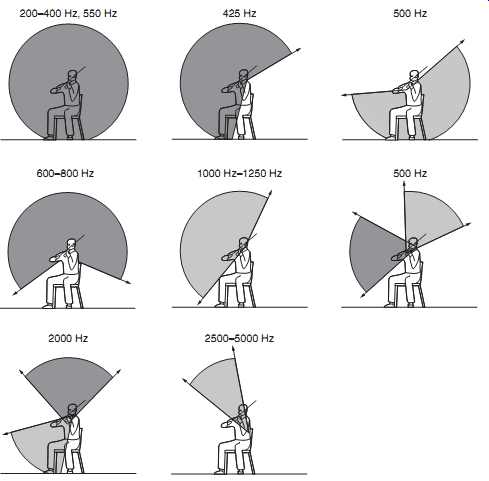
FIG. 3 Illustrations representing the sound radiated in different directions
at different frequencies by a violin. It’s clear that no single microphone
location can capture a totally balanced spectrum and that a reflective
room-like a concert hall or recording studio-plays an important role
in allowing all of the sounds radiated in all directions to blend. The
common practice of placing microphones above the violin section has been
blamed for making them sound strident. Note the 2500-5000 Hz beam of
sound. From Meyer, 1993, Figure 11.
3. RECORDING: MUSICAL INSTRUMENTS IN ROOMS
Musical instruments radiate sound in all directions with many frequency-dependent directional patterns-f For example, high frequencies from violins radiate vertically away from the top plate of the instrument, and those from a trumpet project outward from the bell of the instrument. Other frequencies may radiate almost omni-directionally, or with a pattern of a dipole radiator ( figure eight). In a concert hall, one of the functions of the stage enclosure and its immediate surroundings is to collect these sounds and reflect some of them back toward the musicians so they can hear one another. The other function is to communicate a blended mixture of orchestral sounds into the audience through the reflected sound field.
Once past the first few rows in a concert hall, most of what one hears is reflected sound. This creates a problem in recordings made with microphones located at choice audience seating locations; the overall sound is dominated by reverberation. Two ears and a brain, operating in the live venue, are working with much more information than they are when listening through a small number of channels and loudspeakers at home. In the live situation, an energetic reflected sound field is an expected and important part of the acoustical context; in home audio, the same proportion of reverberation in a recording can be obtrusive.
One of the common criticisms of recorded music is that it just doesn't quite sound like the real thing. Of course, there are several opportunities for perceived differences, such as timbre, localization, image size, spaciousness, and envelopment. In terms of sound quality-timbre-if the real thing is defined by what is heard in the audience at a concert, one need look no further than the locations of the recording microphones used to capture the orchestral sound. They are inevitably much closer to, and frequently above, the performers. What the microphones "hear" is only a small portion of the blended sounds that are delivered to the audience. FIG. 3 shows the frequency-dependent directivity of a violin. Examining this and other musical instruments, it’s evident that no single axis is an adequate representation of the timbral identity as heard by the audience in a reflective performance venue (Benade, 1985; Meyer, 1978, 1993). One of the great skills of good recording engineers is the choice, placement, and equalization of microphones so that what we hear in recordings is representative of what we hear in real life. Note the choice of the words "representative of," because obviously it cannot be identical. There is no possibility of anything like "waveform fidelity"; there simply is no single waveform that totally exemplifies the sound of real musical instruments. This fact presages discussions later in the guide about the near inaudibility of phase shift compared to the dominant role of spectrum (frequency response, in loudspeakers); to have waveform fidelity, both are required.
Recording studios are deliberately reflective, and the best of them have quite diffusive sound fields to spatially integrate the differing off-axis sounds of musical instruments into a pleasing whole. Still, microphone placement is a factor, and some amount of equalization in a microphone channel is a common thing. The portion of the sound field sampled by the microphone often exhibits spectral biases that are not in the overall integrated sound of the instrument. Just think of a grand piano, a massive and massively complicated radiator of sound, and try to imagine how to capture a fully blended representation of its sound with a single microphone. Benade (1986) argued that recordings should provide listeners with a "room average," accomplished with what he called "reasoned miking." This, he said, would be preferred by concertgoers but not by audiophiles, who have been conditioned with close-miked, highly processed, reflection-free sound.
In a performance space, a rich reflected sound field can deliver more of the timbral and spatial signature of voices and instruments to our two ears and brain, which then make marvelously beautiful sense of it all. Early reflections allow us to accumulate information about onset, spectrum, pitch, and location.
A complicated, three-dimensional sound field is part of natural listening. When we attempt to achieve the same effect with two or five loudspeakers in a small room, some acoustical factors are omitted. It can sound good, but it cannot sound the same.
4. HEARING: HUMAN LISTENERS IN ROOMS
At the receiving end, we have ears with frequency responses that are different for sounds arriving from different directions-the reverse of what we just discussed. Not only that, but each of us has differently shaped ears. It doesn't matter that we differ from each other because whatever we are born with is our lifetime reference for all sounds, whether live or reproduced. The directional characteristics of our ears are described by "head-related transfer functions" (HRTFs; Blauert, 1996). These are complex (amplitude and phase versus frequency, or impulse response) descriptions of how sounds arriving from different angles are modified on the way to the eardrum. Because of the detailed structure of our external ears and the placement of the ears on each side of an acoustically reflective head, HRTFs are unique characterizations of each of the incident angles of incoming sounds, helping us to localize where sounds come from.
In terms of timbre, it seems as though this could be a problem, making sounds coming from different directions take on distinctive sound qualities.
Theile (1986) and Warren (1999) have investigated the effect, and Warren summarizes it as follows:
These position-dependent transformations don’t interfere with the identification of a sound, but they do contribute to spatial localization. Thus, some spectral changes cannot be perceived as such. They are interpreted as changes occurring in an external physical correlate (azimuth and elevation of the source), while the nature of the sound (its quality or timbre) appears to be unchanged.
Theile (1986) incorporates this in his "association model" of hearing, in which timbre is, in effect, associated with direction. We expect sounds from different directions to have somewhat different timbres because that is one of the clues helping to figuring out what direction it’s coming from. Once the direction is identified, it seems that we apply a kind of correction, so we are not distracted by the timbre shift. Another factor that must be considered is localization, which is dominated by the direct, first arrival, sound. However, in normal rooms, reflected sounds arriving from other angles (and therefore modified by different HRTFs) will contribute to the perceived timbre. So it’s entirely reasonable to think that the distinctiveness of HRTFs helps to identify the direction but that the "spatial average" of many HRTFs processing reflected versions of the sound helps to maintain timbral neutrality.
In a home theater, if broadband pink noise (not the common band-limited multichannel calibration signal) is switched to each of five identical loudspeakers, a listener facing forward will hear obvious changes in timbre. In jumping from the center to the left front or right front loudspeaker, a high-frequency boost may be heard. From there to either of the side surround loudspeakers, there are more timbral changes. This is as it should be. To confirm that all five loud speakers in a system are similar in timbre, it’s necessary to face each of the loud speakers as they play the same test signal. Then, and only then, can identical loudspeakers have identical perceived timbres. This is the timbre matching important to sound reproduction, not what is heard while facing forward. If a five-channel system reproduced a quintet of identical musical instruments, one would want each one reproduced identically, even though we know that, depending on incident angle, the sound from each one will be distinctively modified on the way to our eardrums. After all, that is what would happen in a live situation.
One can reasonably speculate that a stereo phantom center image might present a problem because the perceived direction is 0° and the sound sources are at, say, ±30°, meaning that we may be applying the wrong directional "association" (0°) for sounds that are physically arriving from ±30°. This could be a contributing factor to the perceived difference between a real center loudspeaker and its phantom image version. The real one is correct, and Figure 9.7 illustrates a substantial physical reason for there being a difference.
To summarize, the perception of timbre in rooms has partly to do with (1) the identification of direction, (2) any compensation for perceived timbre that follows from this, and (3) the averaging of reflected versions of the direct sound arriving from many different directions. The effects of any individual HRTF are therefore completely intact for the first arrived sound, the direct sound that defines direction, and then it’s progressively diluted by reflections from many directions, progressively building a short-term average that reveals the "generic" spectral identity of the sound source.
These reflected "repetitions" of the direct sound have a second benefit: They increase our sensitivity to the subtle medium- and low-Q resonances that give sounds their distinctive timbres (Toole and Olive, 1988). Music and voices are timbrally enriched by room reflections (e.g., singing in the shower). See SECTION 9 for more information.
5. REFLECTIONS: CONVEYERS, INTEGRATORS, AND DIFFERENTIATORS OF SOUND
In rooms for live performances, therefore, reflections are highly beneficial in integrating all of the sounds radiated from musical instruments and in conveying the essential timbres of those sounds to ears that themselves have strong directional properties. Reflections also contribute to perceived loudness, a good thing for voices and acoustical instruments like violins that have limited power.
And, finally, reflected sounds convey to us important information about the size, reflectivity, and geometry of the performance space. In perceptual terms, though, these qualities appear as variations in impressions of reverberation, direction, distance, auditory image size, spaciousness, and envelopment, all of which, and more, combine to describe the essential qualities of concert halls and differentiate the good from the not so good.
As we get into the details, we will see that reflections from certain directions, at certain amplitudes and delays, are more or less advantageous than others and that collections of reflections may be perceived differently from isolated reflections. We humans like reflections, but there are limits (too much of a good thing is a bad thing) and ways to optimize desirable illusions.
===
Concert halls & auditoria Offices and workspaces Home listening rooms Automobile cabins Listening spaces
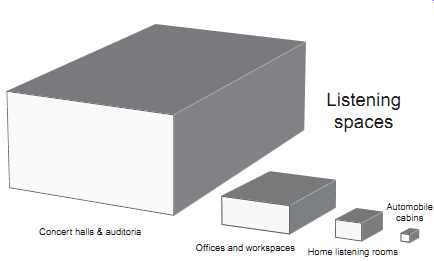
FIG. 4 A graphic portrayal of the range of listening spaces relevant
to our work and entertainment.
===
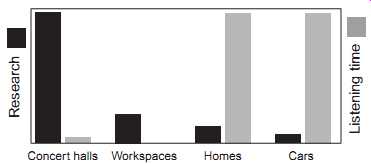
FIG. 5 An opinion about the relative amounts of scientific research
dedicated to understanding sound propagation and psychoacoustics in each
of the spaces shown in FIG. 4 (dark bars). Also shown is an opinion about
the relative time typical people spend in "foreground" listening
in each of those spaces (light bars). Even allowing for large errors
in these estimates, there is ample reason to believe that more work is
needed where we listen most.
Concert halls Workspaces Homes Cars Research Listening time
====
6. AN ACOUSTICAL AND PSYCHOACOUSTICAL SENSE OF SCALE
Historically, our interest in room acoustics began with performance spaces.
These days we think of the architectural monuments called concert halls, but the beginnings of public performances were much more modest-usually single rooms attached to drinking establishments and eateries (Forsyth, 1985). By 1885, when Wallace Clement Sabine began his acoustical investigations, large, high-ceilinged, halls were the norm.
FIG. 4 illustrates the range of shapes and sizes of spaces we live, work, and listen in. To the extent that the volume of the space is a factor, it can be seen that the range is enormous: from roughly 741 000 ft^3 (21 000 m^3 ) for a typical contemporary hall, through 3600 ft^3 (100 m^3 ) for a typical home theater, to 120 ft^3 (3.5 m^3 ) for a four-door sedan. Instinctively, it seems unlikely that the same psychoacoustic rules apply to auditory perceptions in all of them.
In reviewing the scientific research that has been done to understand sound fields within these spaces, the majority, by far, has been done in large auditoriums. The purpose of these spaces has traditionally been to ensure the delivery of unamplified musical sound with adequate loudness, sound quality, and musical integrity to a large audience. Today, amplified performances have become part of the entertainment mix.
Ironically, some of the best halls are among the oldest. So why don't they just copy them? It's because, in addition to being spaces for acoustical performances, concert halls are also opportunities for architects to exercise their visual imaginations and for budget-conscious administrators to argue for more seating capacity. Because each new hall involves an element of chance, it’s important to understand the science so that the risks are minimized; this is the main motivator for continued research.
Smaller than concert halls and larger than home listening rooms are factories, machine shops, offices, and other work spaces. Acoustical investigations in these spaces have been driven by the need to understand the sound propagation of bothersome noise from HVAC systems and manufacturing machinery and by considerations of speech privacy in offices. These investigations have tended to focus on the physical acoustics because the finer points of sound quality are subordinate to the more important issues of establishing a safe and comfortable work environment. Classrooms are also in this size category, and there the primary concern is speech intelligibility, a very special and important topic of investigation.
Domestic listening rooms, recording control rooms, and the passenger compartments of cars are still smaller, and they incorporate a new factor: the sound reproducing system. In these cases, the room plays a role, but it’s a subordinate role. The recorded art is the star, and everything else-electronics, loudspeakers, and listening room-are merely a means of delivery. Listeners trust that what they hear is a reasonable facsimile of the recorded art, music, movies, games, television, or whatever. The purpose of this guide is to assist in reaching that objective.
For all the pleasures of attending live, unamplified performances, such concerts are a small part of our collective entertainments. It’s more than the "high brow" music, which has limited appeal; it’s cost, time, travel, and the fact that Tuesday night after a hard day at the office, one simply may not be in the mood for Stravinsky. Reproduced sound has been a great liberating factor in our lives, making background music nearly ubiquitous, sometimes annoyingly so, and our personal wishes for foreground music remarkably well gratified in our homes and cars and while we jog, work out, or walk the dog. It seems that almost any where it’s possible to press a "play" button and hear the music of our choice.
FIG. 5 illustrates the present situation. A great deal of research underlies our understanding of concert halls, but that is not where most of us spend most of our listening time. This guide is an attempt to adjust the balance, just a little, toward the circumstances where we mostly live and listen.